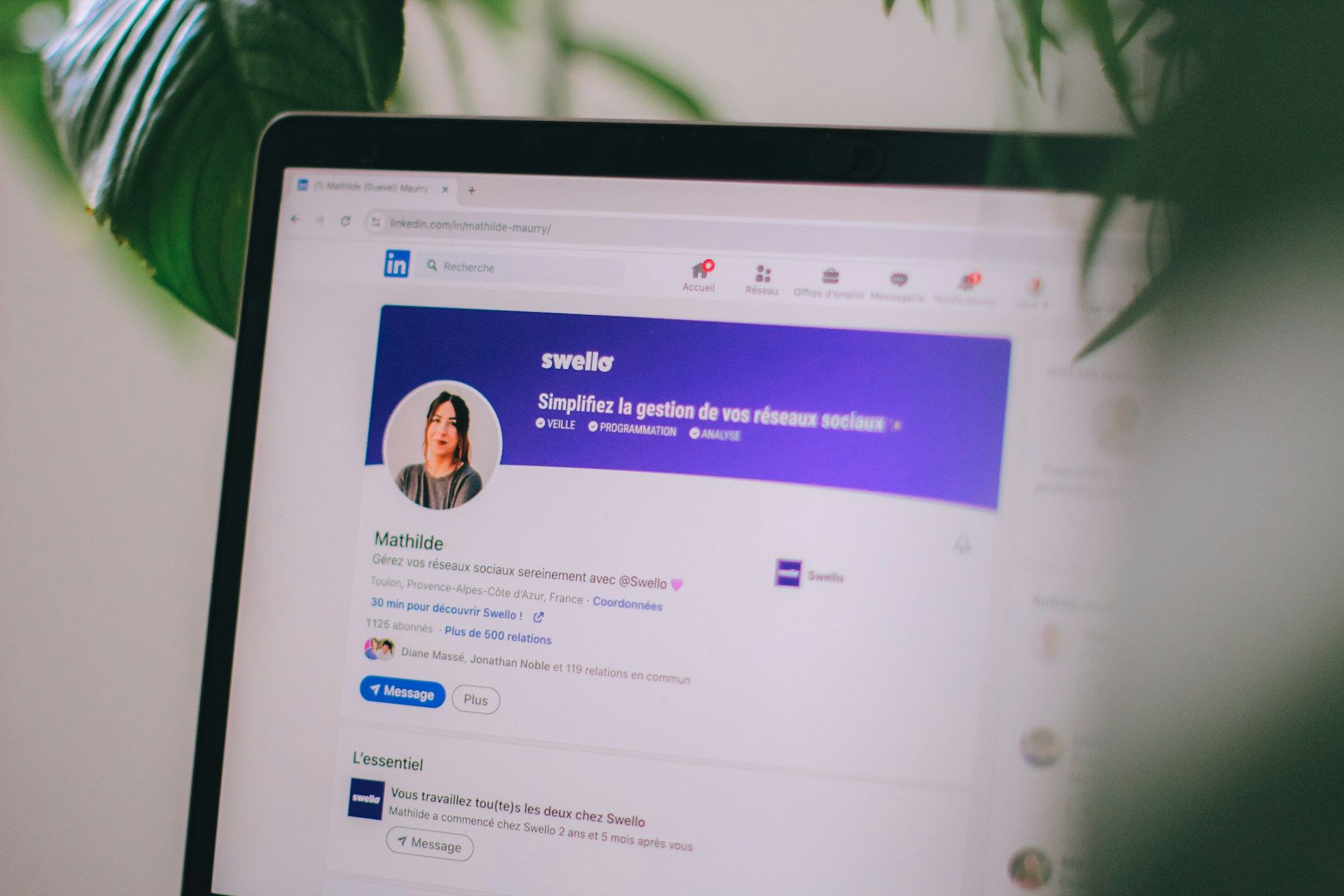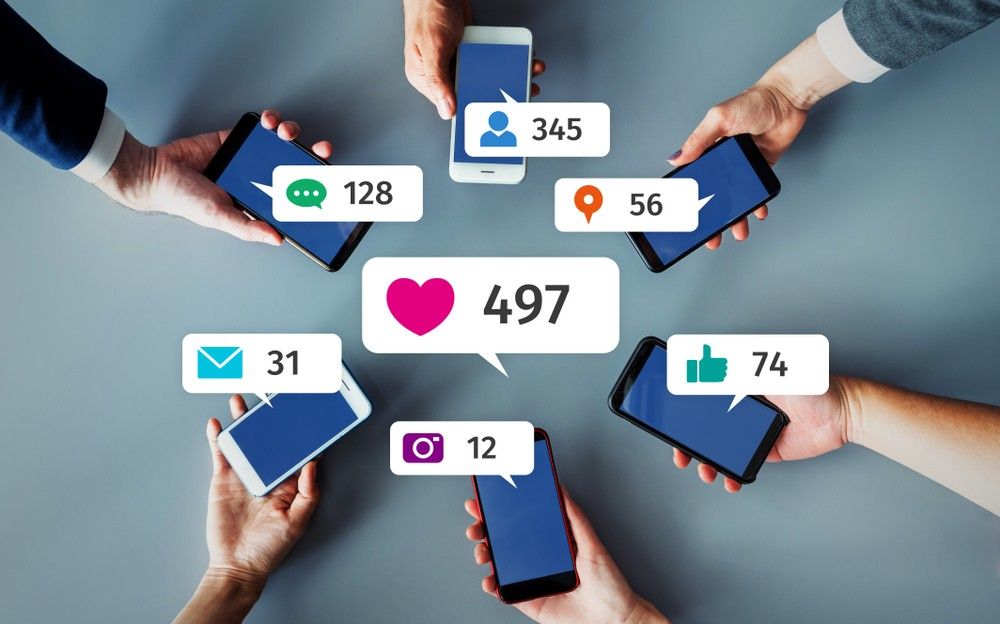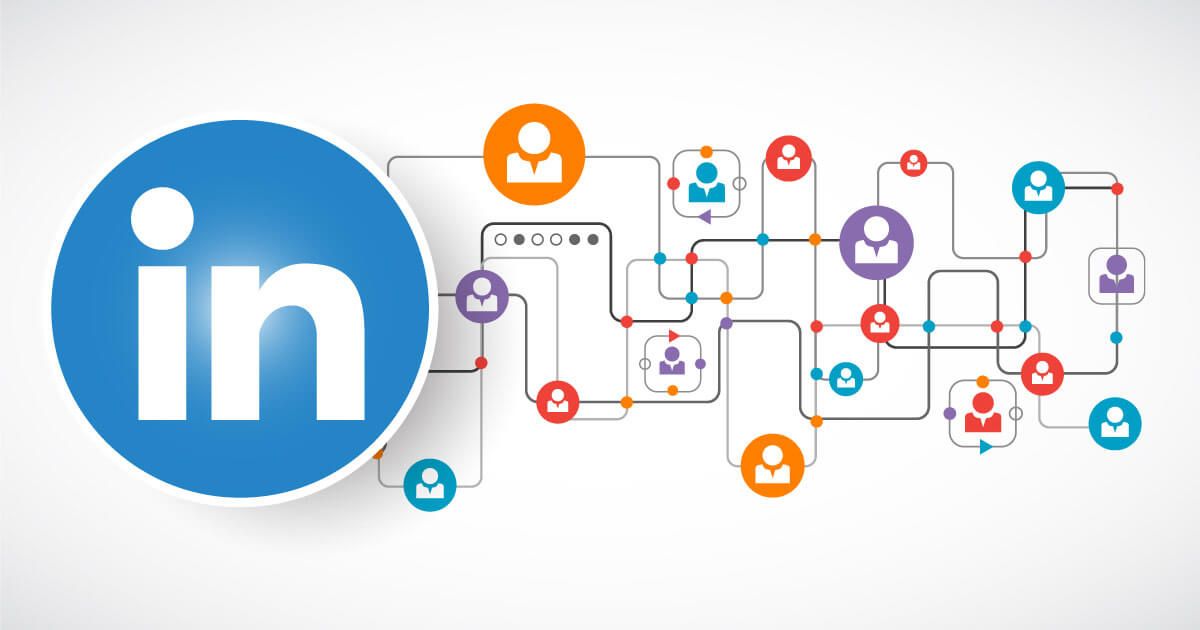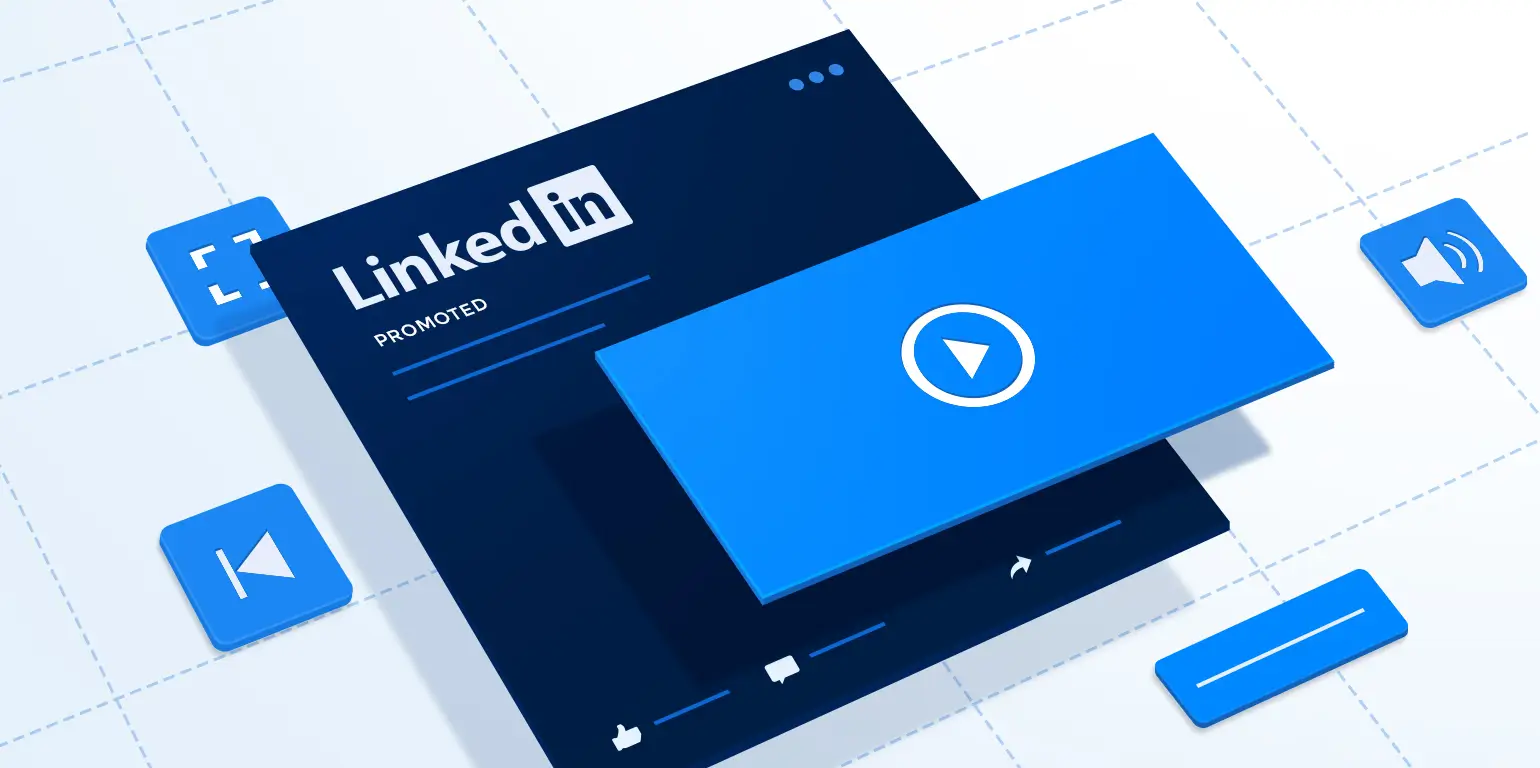How To Get The Most From LinkedIn To Market Your Business
- GUIDES
If you want to improve your LinkedIn marketing to achieve greater business impact, you’ve come to the right place. In this article, we'll provide actionable tactics that will refine your LinkedIn strategy. You’ll gain insights into effectively optimising your profile, engaging an audience tailored to your brand, and leveraging LinkedIn’s unique features for lead generation.
Key Takeaways
A LinkedIn marketing strategy requires a solid foundation including clear objectives that align with broader business goals, identification of target audiences, and a content roadmap for consistent and targeted messaging.
Optimising a LinkedIn presence involves enhancing both company and personal profiles, leveraging LinkedIn groups for networking, and utilising LinkedIn ads effectively for lead generation and to increase brand awareness.
Successful LinkedIn marketing is measured through engagement, reach, lead generation performance, and competitor benchmarking, facilitated by LinkedIn’s analytics tools, with strategies continually refined based on these insights.
Crafting Your LinkedIn Marketing Blueprint
A successful LinkedIn marketing strategy can be compared to a well-constructed building. It starts with a solid foundation of clearly defined objectives, which act as the guiding force for all subsequent efforts. These objectives could range from attracting top talent and generating new leads to boosting website traffic.
Creating these objectives isn’t a task to be done in isolation. Businesses should align their LinkedIn strategy objectives with broader social media goals for a cohesive marketing approach.
A LinkedIn marketing strategy acts as a roadmap for your LinkedIn marketing efforts. This strategy should encompass identifying your target audience, establishing social media goals, optimising your company page, posting and promoting content, and measuring success through metrics.
A building is only as strong as the materials used to construct it. Similarly, the content you share on LinkedIn should be relevant to your target audience to ensure engagement and reach, focusing on consistent themes or content pillars. Using relevant hashtags can differentiate your content and enhance its visibility.
Defining Your Marketing Objectives on LinkedIn
The key to any successful LinkedIn marketing strategy is having clear, well-defined marketing objectives. Think of these objectives as the destination you’re aiming to reach with your LinkedIn marketing journey. Without a clear destination in mind, you might find yourself wandering, unsure of which path to take or which strategies to implement.
These objectives are the compass that guides your content and messaging on LinkedIn, ensuring they resonate with your target audience. Whether you’re aiming to increase brand awareness, drive website traffic, or generate leads, having well-defined objectives will ensure your LinkedIn strategy is aligned with your overall business goals.
Identifying and Understanding Your Target Audience
You need to know your target audience on LinkedIn. LinkedIn users tend to be older and have a higher income than users on other social media platforms, making it a rich source of potential customers for businesses.
To identify your target audience on LinkedIn, start by examining the profiles of your current customers. Look for common characteristics such as industry, job title, and geographical location. Joining LinkedIn groups related to your industry can also provide valuable insights into your target audience’s needs and preferences.
By understanding your target audience, you can tailor your content and engagement strategies, ensuring your LinkedIn marketing efforts are directed at the right people.
Developing a Content Roadmap
It's never been more important to plan your LinkedIn content. This ensures that your LinkedIn marketing efforts stay on track and maintain consistency. A content calendar can be an invaluable tool in this endeavour, acting as a visual representation of your planned content, the dates it will be posted, and the channels it will be shared on.
Apart from helping you maintain consistency, planning your content also allows you to develop a focus for your LinkedIn marketing strategy. Here, content pillars come into play. These are themes or topics that you consistently focus on in your content. By establishing content pillars, you can ensure that your LinkedIn marketing strategy maintains a clear focus and direction.
Optimising Your LinkedIn Presence for Maximum Impact

Building a striking presence is not only about using the best materials but also about optimising the design to create maximum impact. Enhancing your LinkedIn presence entails not only creating engaging content but also optimising your personal profile and company page, including the use of LinkedIn Showcase Pages to make your company page more inviting and engaging.
Your LinkedIn profile is like the front of a building. It’s the first thing people see, and it’s what makes a lasting impression. Therefore, it’s crucial to make it as attractive and compelling as possible. Here are some tips to make your LinkedIn profile effective:
- Include a concise description of your primary skills or achievements in your headline.
- Show some of your personality to make your profile more engaging.
- Add media to the ‘Featured’ section of your profile to highlight your best work or key accomplishments prominently.
To boost engagement and connections on your company page, consider integrating the LinkedIn Company Follow button on your website and other digital platforms. This simple addition can significantly increase your visibility and encourage more LinkedIn users to follow your company page.
Your LinkedIn profile should have easily identifiable names, headlines, and other simple identifiers to ensure recognition. Share personal stories, success stories, and personal development narratives to make your brand more relatable and engaging.
Enhancing Your Company Page
Your company page on LinkedIn is the lobby of a building. It’s where your visitors get their first impression of your business. It’s crucial to make it as inviting and informative as possible. One way to do this is by using LinkedIn Showcase Pages. These are niche pages that branch off your main LinkedIn page, allowing you to feature specific content or highlight certain aspects of your company.
Another way to enhance your company page is by adding the LinkedIn Company Follow button to your website.
This simple yet effective tool can significantly boost your page’s engagement and connections by promoting its LinkedIn presence. By utilising these features, you can ensure that your company page effectively showcases your business and attracts more attention and engagement.
Polishing Your Personal Profile
Each section of your LinkedIn profile needs to be polished and effective. Start by updating the background photo on your profile. By implementing this simple step, you can distinguish your profile and tailor it to your career or interests. This will make it more personal and relevant.
Next, focus on your ‘About’ section. This is where you tell your personal professional story and showcase your uniqueness in your field.
Be sure to include your objectives or freelance business leads to make an impact and clarify your intentions.
Personalising your LinkedIn profile not only helps your character shine through but also builds trust and increases engagement with your content.
Engaging Content: The Heart of LinkedIn Success

Creating engaging content on LinkedIn is like designing the interior of a building. It needs to be attractive, functional, and tailored to the needs and preferences of the users. By creating a variety of content types, such as:
- Text posts
- Images
- Documents
- Videos
- Live videos
- Polls
- Stories
- Events
You can cater to different audience preferences and enhance engagement.
Share stories about your customers, employees, and company to foster relatability and showcase your company culture.
Remember to address your audience’s needs and pain points in your content. When you do this, you can provide answers to their questions and share valuable insights that could help shape their strategies.
Creating engaging content is not enough. You also need to boost its visibility. Here, hashtags and @mentions can be your allies. By utilising trending hashtags, you can tap into popular topics and connect with your target audience. Leveraging @mentions can also boost engagement and brand awareness by involving other users and potentially their networks
Content Diversity: Mixing It Up
You should diversify your content on LinkedIn. This can involve repurposing existing content into various formats, such as turning blog posts into videos or infographics. Diversifying content is not only about catering to different audience preferences but also about maintaining a consistent posting schedule.
Video content, in particular, is a powerful tool for grabbing attention and providing an engaging visual experience. Whether you’re sharing a tutorial, a behind-the-scenes look at your business, or a customer testimonial, videos can help you connect with your audience on a deeper level.
Timing Is Everything: When to Post
The timing of your LinkedIn posts can significantly impact their success. Maintaining a consistent posting schedule keeps your brand visible and top of mind among your audience. LinkedIn recommends sharing content once or twice a day, or at least once a week, to maintain consistency.
It’s not just about how often you post, but also when you post. Avoid posting on slower-response days, such as Fridays and Saturdays.
Amplifying Reach with Sponsored Content
Use sponsored content on LinkedIn to amplify the reach of your content. Sponsored content allows you to promote your company’s content directly in users’ feeds, reaching a highly engaged audience.
Whether you’re promoting a blog post, an eBook, or a webinar, sponsored content can help you reach a wider audience and generate more leads. But remember, the key to successful sponsored content is to ensure that it provides value to your audience. This can be achieved by offering insights, providing solutions to common challenges, or sharing industry trends.
Leveraging LinkedIn Groups for Strategic Networking

LinkedIn groups are like the community spaces in a building, where people gather to connect, share ideas, and build relationships. By joining and managing LinkedIn groups, you can foster relationships, build credibility, and establish thought leadership within your industry.
Leverage LinkedIn groups to facilitate networking and collaboration. Whether you’re joining industry-related groups or creating your group, LinkedIn groups can provide valuable insights, networking opportunities, and a platform to showcase your expertise.
But networking on LinkedIn isn’t confined to groups. LinkedIn also offers tools for personal networking. Personalised direct messages, endorsements, and follow-ups with new connections can all help to strengthen and expand your LinkedIn network.
Finding and Joining Relevant Groups
You need to join LinkedIn groups that align with your professional interests. Finding relevant groups can be accomplished by checking curated highlights, searching with keywords, and looking for groups that show regular activity.
Once you’ve found potential groups, here are some steps to follow to fully benefit from your membership:
- Request to join the group.
- Engage in group discussions by commenting on posts and sharing your expertise.
- Share relevant content with the group.
- Connect with other members of the group. By following these steps, you can become an active, contributing member of a LinkedIn group.
Establishing Your Own LinkedIn Group
Create a LinkedIn group that reflects your brand identity. Establishing yourself as a thought leader and growing a community are some benefits of managing a LinkedIn group. It also provides a platform for generating content ideas, promoting brand awareness, and potentially generating leads.
As the group manager, you have the discretion to approve membership and ensure that applicants meet the group’s criteria. By creating a group that aligns with your brand and industry, you can attract like-minded professionals and foster a community that supports your business goals.
Networking Beyond Groups
Make sure to leverage LinkedIn to build both broad networks and personal connections. Direct messages on LinkedIn are crucial for strengthening existing networks and expanding connections through private, personalised interactions.
Personalised connection requests, endorsements, and follow-ups with new connections are all effective networking strategies on LinkedIn. By being thoughtful and providing value in your interactions, you can establish a positive professional brand and build meaningful relationships on LinkedIn.
Mastering LinkedIn Ads for Lead Generation

You can use LinkedIn ads, including dynamic ads and Lead Gen Forms, to attract potential customers to your business. LinkedIn offers various types of ads, such as text ads, message ads, and video ads, for different marketing goals.
LinkedIn’s Lead Gen Forms provide a seamless way to collect leads, with pre-filled forms ensuring higher completion rates and quality leads. By targeting your LinkedIn Ads based on specific targeting criteria, such as:
- Job titles
- Job functions
- Industries
- Company size
You can customise your campaigns to reach the most relevant audience.
Crafting Compelling Text Ads
As architects use compelling visuals and text to attract attention to their billboards, you need to create compelling text ads on LinkedIn. Text ads are a simple yet effective way to promote your business on LinkedIn, allowing you to reach a broad audience with a clear and concise message.
Crafting compelling text ads involves creating an engaging headline, a compelling description, and a clear call to action. Just like an architect uses a blueprint to guide their design, you should use your marketing objectives to guide the creation of your text ads. By focusing on your target audience’s needs and preferences, you can create text ads that resonate with them and drive them to take action.
Creating Conversations with Message Ads
Ensure that you create message ads that facilitate conversation with your audience. LinkedIn messaging allows direct engagement with users through message ads, sending personalised messages directly to their inboxes, encouraging them to take action.
Personalised message ads on LinkedIn result in 15% more responses compared to non-personalised bulk messages. By mentioning a specific detail in your message ads, you can show a genuine interest in your audience and stand out from other businesses. Integrating Lead Generation forms into your Message Ads can also boost conversion rates, showcasing the effectiveness of this feature for lead capture.
Maximising Impact with Video Ads
You need to use video ads on LinkedIn to create a lasting impression on your audience. Video ads can appear natively in users’ messaging and feeds, providing an engaging visual experience.
By targeting your video ads to the right audience and providing valuable and compelling content, you can engage viewers effectively. Whether you’re promoting a product, sharing a customer success story, or providing valuable insights, video ads can help you leave a lasting impression on viewers, enhancing brand recognition and conversion opportunities.
Measuring Success with LinkedIn Analytics
Like blueprints and models to measure the success of their designs, you need to use LinkedIn analytics to measure the success of your LinkedIn marketing efforts. LinkedIn provides in-depth analytics, including metrics such as:
- Reactions
- Comments
- Impressions
- Reposts
- Unique visitors
- Content impressions
- Follower growth
Understanding what content achieves higher engagement through analytics assists in tailoring future content strategy to focus on preferred content types, styles, and messaging, enhancing the resonance with the intended audience. Evaluating historical data by selecting a custom date range provides insights that guide long-term strategic improvement to your marketing efforts on LinkedIn.
Tracking Engagement and Reach
It's important to track the engagement and reach of your LinkedIn content. LinkedIn’s post analytics provide insights on metrics such as:
- Discovery
- Engagements
- Demographics of unique viewers
- Impressions
- Overall post-performance analytics
You can also gain detailed information about your followers, including the industries they work in, their job titles, and their geographic locations. By analysing analytics data related to LinkedIn hashtags, you can understand how posts with specific hashtags perform and build a list of top-performing hashtags.
Analysing Lead Generation Performance
Assess the success of your LinkedIn marketing efforts by the quality of leads generated. Analysing conversion rates is crucial for understanding lead quality and the effectiveness of marketing initiatives.
Conversion rates can inform marketers which LinkedIn features like InMail or Sponsored Content yield more leads when compared with organic content. By tracking conversion metrics, you can measure the success of different campaign tactics and content types, leading to data-driven strategy adjustments.
Benchmarking Against Competitors
Benchmark your LinkedIn marketing performance against your competitors. LinkedIn provides competitive insights that allow you to see how you stack up against similar companies in terms of performance on key metrics.
Insights such as competitive rank, audience demographics, and content preferences can be gleaned from analytics to understand your competitor’s strategy. Strategic adjustments based on analytics might include refining your content strategy, post timing, or investment in sponsored content to improve your competitive positioning.
Elevating Brand Awareness Through Live Events
Use LinkedIn Live Events to elevate your brand awareness, which can be streamed using third-party broadcasting tools to showcase your expertise, launch products, or host Q&A sessions.
Connecting Live with Your Audience
linkedIn Live events can be used to connect with your audience in real time. LinkedIn Live events can be streamed using third-party broadcasting tools to showcase your expertise, launch products, or host Q&A sessions.
LinkedIn recommends the following tips for planning and hosting a successful LinkedIn Live event:
- Plan for the event at least 2-4 weeks in advance.
- Select an appropriate streaming duration to maximise audience engagement.
- Feature interactive content such as webinars and product demos to drive more results.
By following these tips, you can create a successful LinkedIn Live event that engages your audience and drives results.
Curating a Seamless User Experience
The best marketers ensure that every element of their design creates a seamless user experience, you need to ensure that every aspect of your LinkedIn marketing strategy creates a seamless user experience. Creating a cohesive user experience on LinkedIn ensures that each interaction with your brand is professional and consistent.
Consistency in content marketing helps in building trust with your audience, making the brand a familiar and reliable choice. Incorporating a LinkedIn Lead Gen Form into your strategy simplifies the process of capturing leads. Upon submitting this form, users are presented with a ‘thank you’ page that directs them to the advertiser’s chosen content or website, enhancing the post-conversion experience.
Consistency Across All Content
Start by looking at the consistency in your LinkedIn content. Consistency in content marketing helps in building trust with your audience, making the brand a familiar and reliable choice. Displaying company values and mission on social media underlines the organisations commitment, and contributes to a consistent brand identity.
Developing a style guide ensures consistency across all marketing materials. This includes the proper use of:
- Logos
- Colors
- Fonts
- Voice
- Writing style
- Imagery
By maintaining consistency in your content, you can ensure that your brand stands out and leaves a lasting impression on your audience.
Streamlining the Path to Conversion
Upon submitting a LinkedIn Lead Gen Form, users are presented with a ‘thank you’ page that directs them to the advertiser’s chosen content or website, enhancing the post-conversion experience.
This seamless transition from engagement to conversion ensures that your audience doesn’t lose interest or get confused along the way. By streamlining the path to conversion, you can increase your conversion rates and maximise the return on your LinkedIn marketing efforts.
Summary
In conclusion, LinkedIn offers a wealth of opportunities for businesses to connect with a professional audience, build brand awareness, generate leads, and grow their business. By crafting a comprehensive marketing strategy, optimising your LinkedIn presence, creating engaging content, leveraging LinkedIn groups, mastering LinkedIn ads, using LinkedIn analytics, elevating brand awareness through LinkedIn Stories and Live Events, and curating a seamless user experience, you can leverage the full potential of LinkedIn for your business. As with a well-designed building, a well-executed LinkedIn marketing strategy can leave a lasting impression, attract an engaged audience, and deliver tangible business results.
Frequently Asked Questions
How can I define clear marketing objectives for my LinkedIn strategy?
To define clear marketing objectives for your LinkedIn strategy, start by understanding your overall business goals and then translate them into specific, measurable objectives. For example, if the business goal is to increase brand awareness, the LinkedIn objective could be to increase the number of followers by 20% in the next quarter.
How can I identify and understand my target audience on LinkedIn?
To identify and understand your target audience on LinkedIn, examine the profiles of your current customers for common characteristics and join industry-related LinkedIn groups for insights. This will help you gain a better understanding of their needs and preferences.
What types of content should I share on LinkedIn?
You should share a variety of content on LinkedIn, including text posts, images, documents, videos, live videos, polls, stories, and events, while ensuring relevance to your target audience and using hashtags and mentions for visibility. This will help you engage your audience effectively and build your professional presence on the platform.
How can I use LinkedIn groups for networking?
To use LinkedIn groups for networking, join groups related to your professional interests and engage in discussions. Consider creating your group to showcase your expertise and build a community, and don't forget to connect with new contacts through personalised messages and follow-ups.
How can I measure the success of my LinkedIn marketing efforts?
You can measure the success of your LinkedIn marketing efforts by utilising LinkedIn's analytics to track metrics such as reactions, comments, impressions, reposts, unique visitors, content impressions, follower growth, and conversion rates to assess lead quality and marketing effectiveness.


